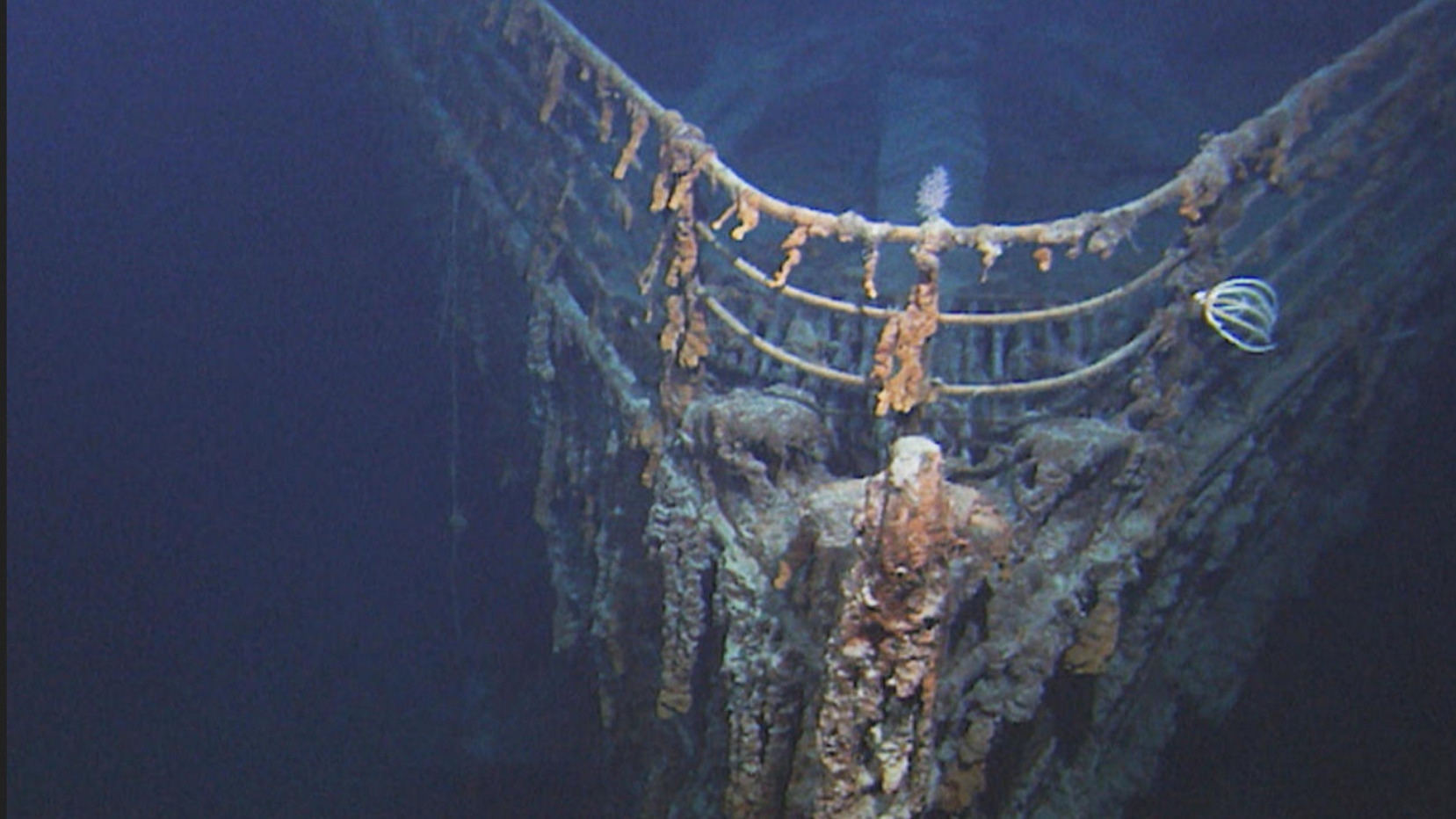
How does the Titanic look like now, to which the missing bathyscaphe descended
This is the first and only survey of the vessel made in 8K — ultra-sharp resolution, which gives a very high level of detail. As Stockton Rush, president of OceanGate Expeditions and one of the passengers of the missing Titan, said at the time, «amazing details» will not only be interesting to the general public, but also useful to scientists. Biologists will be able to study ocean flora and fauna using them, and marine archaeologists will be able to estimate the rate of decay of the Titanic. Indeed, it was thanks to this shooting that it was possible to see for the first time one of the steam boilers lying at the bottom, an anchor chain and an anchor engraved by the manufacturer Noah Hingley & Sons Ltd., a bracket attached to the main mast of the ship, writes Business Insider.
«A rust stain on the bottom of the Atlantic»
How the Titanic is being destroyed
The ship went under water on April 15, 1912, and its wreckage was discovered on September 1, 1985. Almost 40 years of observations, which researchers conduct from manned and unmanned underwater vehicles, is a visual history of decay. This is what the OceanGate Expeditions advertising company was built on, offering wealthy tourists for $ 250,000 to have time to swim to the wreckage and at the same time help science. «The ocean is taking this thing away, and we need to document it before everything disappears or becomes completely unrecognizable, » Stockton Rush told CBS News.
According to scientists, nothing remained of the bodies of the people who died in the crash by 1940. Shoes are still being found on the ship, but the flesh and skeletons have long been destroyed by mollusks. The ship is still resisting, but it has many enemies: strong deep-sea currents corroding the hull, salt and galvanic corrosion, finally the fauna that colonized it, especially the bacteria Halomonas titanicae named after the ship. These deep-sea metal eaters affect the safety of the wreckage most negatively. By eating the steel of the hull and oxidizing it, they lay stalactite-like icicles of rust weighing about 180 kilograms per day. Scientist Henrietta Mann, one of those who discovered Halomonas titanicae, in 2019, in an interview with The Time magazine, said that, largely due to their activity, nothing will remain of the Titanic by 2037, «except a spot of rust on the bottom of the Atlantic.»
The situation is aggravated by the design and weight of the Titanic: as the upper decks collapse, they settle, burying the lower ones under them. Tourists who come here also contribute to the destruction. James Cameron is still remembered for his dive on the Mir deep-sea vehicle in 1995, when he was preparing to shoot his blockbuster. During that expedition, Cameron received spectacular shots for the film, and the Titanic torpedoed by Mir — damage to the hull, destruction of the propeller and the imminent disappearance of Captain Edward Smith's cabin.